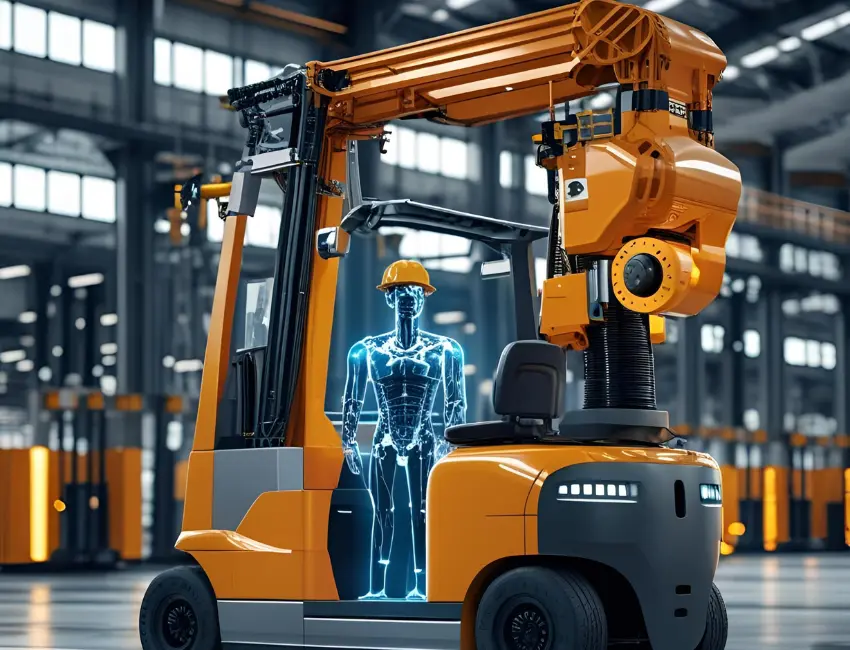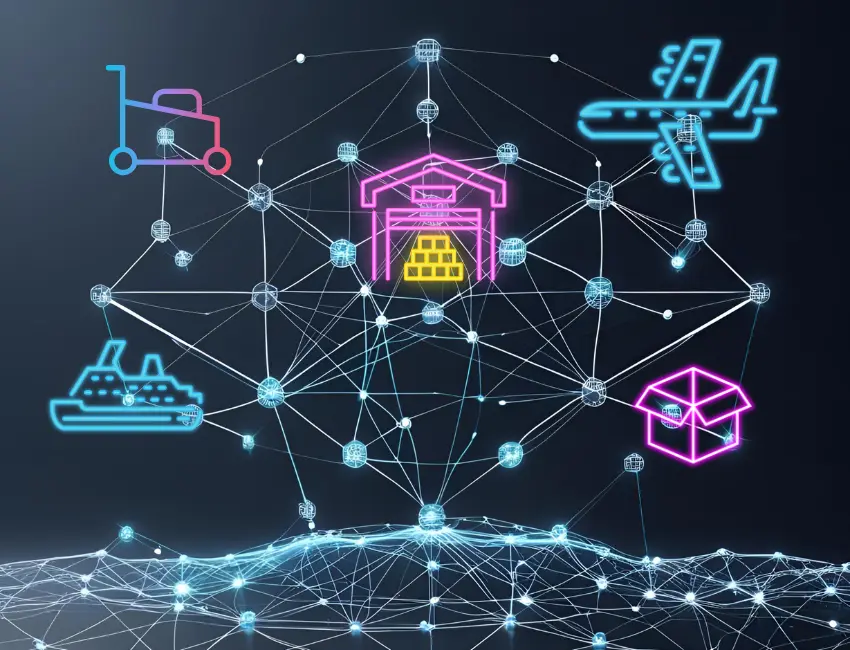

AI logistics intelligence uses artificial intelligence to optimize supply chain operations, including demand forecasting, route planning, inventory management, and real-time tracking. It improves efficiency by analyzing data patterns, predicting disruptions, and automating decision-making across warehousing, transportation, and procurement.
The transportation business is always in motion with the movement of trucks and freight. The transportation industry implements state-of-the-art technologies to help manage their fleets with efficiency, cutting excess costs to operate on a lean budget through streamlined routing for delivery.
However, merely possessing data does not yield advantages. It must be extracted and processed to enable benefits.
Such operations cannot take any positive measures without proper analysis of patterns, their understanding, and consequent actions based upon the distilled conclusions.
AI eases its functions through providing crucial predictive solutions pertaining to service provision and enhancing storage capabilities by calculating required space ahead of time.
In this blog post, we’ll see how AI helps improve logistics operations, with strategies to boost efficiency and support from companies like WebOsmotic that help logistics businesses grow and work smarter.
AI logistics intelligence is the use of artificial intelligence tools to understand logistics data and make decisions automatically or with minimal human input. This includes data from:
AI systems don’t just store this data. AI systems learn from the data, look for designs, and suggest steps. Some systems can even act on their own, like adjusting routes, sending alerts, or re-ordering stock before it dries up.
In simple words, AI logistics intelligence turns it into straightforward and easy to understand data.

The old way of managing logistics included a lot of manual tasks, spreadsheets, guesswork, and late updates. But today’s logistics demands are much higher. Businesses need to:
With traditional tools, this is almost impossible. But with AI logistics intelligence, it becomes achievable.
Let’s look at some real ways AI logistics intelligence changes daily operations:
AI studies traffic, road closures, and weather conditions to plan better routes. It also learns from past deliveries to avoid slow roads and late hours. It reduces time, fuel, and labour and is also helpful for drivers when delivery schedules change suddenly. AI adjusts the route in real time and sends the new plan to the driver, which makes the life of the driver easy.
One of the good things about AI is it reviews past sales, seasonal demand, and customer buying trends to predict what products will be needed soon. Based on this, it can reorder stock automatically or suggest new inventory levels.
This helps businesses avoid running out of goods—or holding too much.
AI-powered systems monitor storage space in warehouses. They decide:
This increases warehouse efficiency and speeds up order picking.
AI can look at data from vehicle sensors like engine heat or brake usage and tell if a vehicle may need service soon. This helps logistics companies plan maintenance before a truck breaks down. It then results in avoiding delivery delays and repair costs.
AI watches for patterns that might signal risk. For example:
AI sends alerts early so action can be taken on time.
Not every company has the tools to turn logistics data into action—but WebOsmotic does. As a trusted AI partner, WebOsmotic builds custom intelligence platforms that help logistics companies make faster, smarter decisions every day.
WebOsmotic’s AI systems include:
WebOsmotic understands that each logistics company is unique. Every system is built to fit your exact needs and workflow.
AI logistics intelligence isn’t limited to one type of business. It helps in:
Third-party logistics companies use AI to improve fleet use, manage labour shifts, and provide clients with accurate tracking information.
Companies that have partnered with WebOsmotic have seen results like:
The information above shows that using AI logistics intelligence isn’t just smart—it’s profitable too.

Not sure where to begin? Here’s a simple path to get started:
Start with one clear issue, such as late deliveries, slow warehouse movement, or poor demand forecasting.
Start gathering the correct data. This could be from:
Share your logistics flow and goals with WebOsmotic. Their team will:
Begin with one use case (like delivery planning). Then, as results come in, expand AI use to other areas—like warehouse automation or fleet maintenance.
Here’s what makes WebOsmotic the top choice for logistics companies:
With WebOsmotic, you don’t just install software. You build a smarter system that gets better every day.
In the modern world of logistics, it’s not enough to just move goods fast. You must also move smart. AI logistics intelligence is the key to making data work for you—not against you.
From warehouses to highways to delivery doorsteps, AI helps logistics companies:
And with WebOsmotic as your AI partner, you don’t need to worry about how to get started. Their smart solutions turn your daily logistics data into business wins.
If your logistics system is ready for a smarter future, AI intelligence is the next step—and WebOsmotic is the team to take it with.